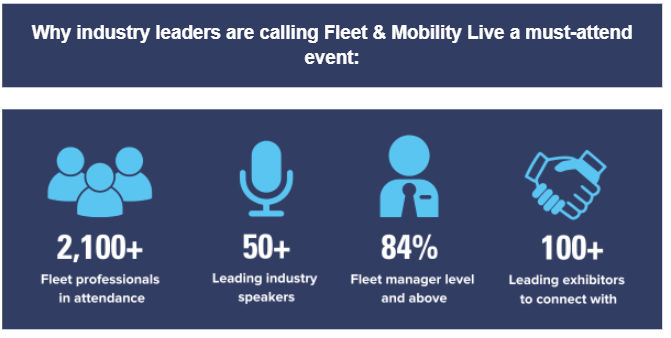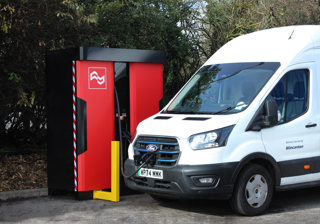By Matt Freeman, managing consultant at CAP HPI consulting
The Ministry of Information created the ‘Keep calm and carry on’ slogan in 1939. It seems apt in today’s automotive sector, where seismic forces are shaping the not-too-distant future.
Much has been written about Rishi Sunak’s decision to push back the ICE ban to 2035. What will it mean for the UK’s journey to Net Zero, and how will it impact the ZEV mandate due to come into effect in 2024?
The automotive industry, from OEMs to finance companies and fleets, has set its sights on a BEV future by 2030. It’s baked into ESG missions, investor agreements, fleet planning and more.
At this stage, it matters little whether the UK Government decides to move the ICE ban to 2035 or if the next government moves it back to 2030. Automotive manufacturers work in 10 to 15-year planning cycles.
Indeed, Nissan has already stated it will only launch electric cars in Europe from now on and cease sales of all combustion-engined cars in the region from 2030.
The consultancy team at Cap HPI advised the 2030 ICE ban could move, and 2035 is aligned with the rest of Europe. While some commentators may believe it takes the pressure off, the ZEV mandate, due next year, will force electric vehicles into the marketplace.
The availability of supply will shape the market. If we consider diesel vehicles, the market share has fallen to 7.8%, not only because demand has declined, but also because the range of models is no longer available.
There will be an abundance of choices when it comes to BEV. The range from European and US manufacturers continues to grow, while new entrants from China will provide drivers with new brands and models to consider.
As the supply chains continue to evolve, the price of BEVs will continue to fall and provide vehicles that appeal to the mass market.
ZEV mandate
The most immediate hurdle for fleets to consider is the ZEV mandate, which the Government has indicated will go ahead.
From March to May 2023, the UK Government ran a public consultation for the introduction of a zero-emission vehicle (ZEV) mandate and CO2 emissions regulation for new cars and vans in the UK.
This followed a technical consultation in June 2022, and a green paper on new vehicle CO2 regulation in July 2021.
The consultation covered the level of ZEV uptake, how allowances and credits could be allocated and used, flexibilities including banking, borrowing and transfers between schemes, derogations and exemptions, how to regulate the non-ZEV portion of the fleet, and how the ZEV mandate and non-ZEV CO2 regulation interact.
The UK-wide consultation included the Scottish and Welsh Governments and the Northern Ireland Department for Infrastructure.
As yet, no final legislation has been drawn up, so the consultation paper remains the only source of information and guidance.
To our knowledge, most OEMs are using the consultation paper to establish their sales plans for 2024 onwards, assuming that it will be reflected in the final legislation.
From 2024, 22% of cars and 10% of vans will need to be zero-emission, with share increasing to 100% in 2035. These targets will apply across the United Kingdom, with the same targets for the Devolved Administrations e.g. Scotland, Wales and Northern Ireland.
According to the consultation document, OEMs selling more than 2,500 vehicles will be subject to the regulation.
While small-volume manufacturers (<2,500 units) will receive credits to offset their sales volume, which may be traded with OEMs. Micro Volume Manufacturers (<1,000 units) will receive a derogation.
OEMs may act as groups where they are ‘connected entities’ under tax and corporate law but must register this intention. Some vehicles will be excluded from the regulation: Special Purpose Vehicles and Wheelchair Accessible Vehicles (WAVs) will be excluded. Allowances can be traded between OEMs at a price agreed between parties and can be banked for use in future years.
Credits can be earned by registering vehicles in Car Clubs, each vehicle sold to Car Clubs will earn 0.5 ZEV credits, up to 5% of total sales of cars and LCVs (separately). ZEVs converted to WAVs will also earn 0.5 credits per vehicle.
As non-ZEVs will continue to be sold until 2035, regulations will be required, this will be in the form of a maximum threshold for each year to 2035.
It will be modelled on the existing system carried over from EU regulations after the UK left the European Union, based on CO2 emissions in g/km using WLTP testing cycles. This will be calculated based on the number of non-ZEVs sold multiplied by CO2 target in g/km.
The baseline for each OEM’s target will be based on their CO2 emissions for 2021, with separate targets for cars and LCVs. These targets will remain flat from 2024 to 2030.
The consultation paper lists numerous ways for OEMs to meet the targets via trading, banking and borrowing credits. However, the most basic strategy is to ‘back into’ the number by setting a volume target for BEVs and then working total sales volume back to the percentage target – but this would almost certainly reduce overall new market volumes.
The main reason underpinning current strong RVs is the continuing shortage of new car supply (2023 will be around 500k short of a normal year), so reducing new registration volumes would support RVs.
However, affordability could become an issue lower down the market chain, which would undermine the demand side.
The current sharp decline in BEV RVs is due to the mismatch between supply and demand, not just quantitatively but also qualitatively – many used BEVs are the ‘wrong’ cars for the used market - too big and too expensive. This should improve as OEMs push more B- and C-segment BEVs into the market.
OEMs still need to manage CO2 emissions, so there will be a place for Hybrids and Plug-In Hybrids, but it comes down to supply, OEMs will push more of them, and they will increasingly become the norm – HEVs first, then PHEVs – and that will likely align their RVs with the old ICE RVs.
OEMs will be running down their supply of ICEs as the BEV share requirement increases, so consumers simply won’t be able to buy new ICEs. This is one factor driving the regulation and could also drive up the RVs of existing older ICE vehicles.
The UK Government is keen not to undermine the UK’s smaller OEMs, but this may become an issue as mainstream and premium brands move to 100% BEV – niche models tend to be ICE and luxury/sports, so there is an issue with allowing ‘rich’ drivers to continue to drive ICE whilst everyone else is pushed into BEVs.
Should established OEMs restrict overall volume to hit their percentage targets, expect Chinese brands to fill the gap. Given the lower cost base of some of these brands, plus a saturated domestic market in China, expect them to move to a price-led strategy.
























Login to comment
Comments
No comments have been made yet.